 We recently asked several industry experts about trends in the design and application of motion controllers to get an idea of where these precision command centers are changing approaches to design engineering. Then we published a much-abbreviated sampling of the enormous amount of insightful feedback Design World received. Below is the uncut commentary in its entirety. Enjoy — and be sure to give us a shoutout or share on LinkedIn if you liked this piece on motion controllers.
We recently asked several industry experts about trends in the design and application of motion controllers to get an idea of where these precision command centers are changing approaches to design engineering. Then we published a much-abbreviated sampling of the enormous amount of insightful feedback Design World received. Below is the uncut commentary in its entirety. Enjoy — and be sure to give us a shoutout or share on LinkedIn if you liked this piece on motion controllers.
Do you see the same or more demand for controllers offering design simplicity or turnkey operation?
Paul Brenner • Eaton Hydraulics Group: As machines and market requirements become more complex, we’re seeing increased demand for integrated solutions both at product and machine levels. So we work directly with customers to understand wants and needs — and then engineer fully assembled subsystems to address both regulatory and performance challenges.

We currently have subsystems available for work, propel, steering, and auxiliary applications. Our product designers, application engineers, and systems experts continue to model (and validate through hardware) ways to improve the productivity, efficiency and stability of final machine designs.
Max Wietharn | Managing partner • DINGS’ MOTION USA: A trend we’ve seen over the last 10 years is design engineers being asked to perform engineering tasks in several areas. In other words, they may have a degree in mechanical engineering, but they must also perform electrical engineering and software development as well. So these design engineers increasingly rely on the technical assistance of suppliers.
Design engineers are also being asked to reduce time to market, which requires products that are easier to use and integrate into product designs. One of the ways we’ve responded to these demands is by designing a motion-control programming architecture that’s simple to understand and quick to implement. We call it SnapTrack. Shown below is the configuration and programming space. Function Blocks are selected from the left and dragged to the build space on the right. Detailed program coding is not required.


John Kowal | Director of business development • B&R Industrial Automation: We’re delivering a combination of simplified software — our modular application (mapp) technology — along with integrated, functional machine modules, as in turnkey integration of SuperTrak industrial transport technology and robotic systems with our motion and machine control solution.
The result is functional hardware-software modules that serve as building blocks for machine builders to deliver more flexible and compact work cells. Instead of conveying to machines to process parts, manufacturing or packaging processes can occur during transport.
By synchronizing robotic axes to SuperTrak platens with the precision of a CNC axis, we can deliver solutions suited to batch-of-one manufacturing and assembly; order fulfillment for online retailers; and automated rainbow packing at the place of manufacture (instead of manual repacking at the distribution center). This level of integration goes far beyond traditional actuators and standalone robots.
Convey parts to machines to process? No more! Manufacturing + packaging during transport #MotionController #AutomationTrends @BR_Automation Share on XFrom a control perspective, everything is developed in a unified software development environment, in a single program running on a single processor over a single industrial Ethernet network for motion, logic, I/O, HMI, robotics, safety, condition monitoring, data acquisition, and transport — independent of the hardware form factor … and so totally scalable. (More after the jump.)

Darrell Paul • Omron Automation Americas: Omron continues to deliver value on two fronts — with easy-to-use products and application specific system solutions. For example, our new 1S series servo features realtime adaptive control and a new feature that optimizes the move profile — both resulting in top performance with plug-and-play simplicity. If the 1S servo is connected to the Omron Sysmac platform, the drive can auto-configure itself. Omron offers application solutions within Sysmac with a comprehensive Function Block Library that offers application support beyond the standard IEC 61131-3 library, including vision integration with motion.
For robots, Omron provides application solutions through ACE software, through which the customer can select an application and then train the robot through a series of simple steps that often include vision functionality as well. These robotics applications include pick and place, dispensing, product sorting and orientation, among others. What really separates Omron from other automation suppliers are time-saving features in the Sysmac Studio software platform that even has a multi-axis full-motion simulation and tuning capabilities to make complex machine setup easier. Most importantly, the integrated programming environment provides a large reduction in risk, engineering, installation commissioning, and run-off testing.

Have you added or expanded services to provide more in-house engineering support and upfront customization?
Kowal • B&R: Our mapp Technology allows significant software integration to let design engineers program less and configure more. Mapp components are IEC 61131-3-compatible software objects that are as straightforward to use as Function Blocks … but incorporate unprecedented functionality and communications.
OEMs and integrators still retain control over their intellectual property using a combination of map components and their own software development to solve the application.
We don’t think it’s a good idea to do integration for our customers. It’s important that OEMs own their software rather than depending on their automation supplier to develop customized solutions (that OEMs may find difficult to support down the road). We are reducing the learning curve, but the OEM needs to both understand their machinery’s software and differentiate their machinery based on their application knowhow.
Brenner • Eaton Hydraulics Group: We have a global team of application engineers (our ACE team) that’s knowledgeable and skilled at providing solutions at system and machine levels. In addition to upfront and after-sale support that these application experts provide, we recently formed a new team of controls and machine specialists. This team develops and solves problems associated with deep machine integration, not just at the hydraulic level but across all the whole machine, because let’s face it — the only way we’ll satisfy the long-term goals of customers is to take a holistic view in terms of power generators and power consumers … and how we apply cross-system data share techniques to enable true power optimization at the machine level. This group is called our Dynamic Machine Control team, and they work very closely with our ACE team on new opportunities.
We also work to understand machines’ duty cycles and operating conditions to help build solutions that help address their problems. For example, we’re currently working with a European OEM on a new steering solution. To drive efficient machine operation, the operator needed both front and rear-mounted steering inputs, making the cab ergonomics complex and a bit of a tight squeeze. Our engineers worked closely with the customer to develop a custom Steer by Wire solution — the ASV60 — that allows the operator to control the machine from a 180° rotating seat. In addition to improving operator comfort, this let the customer move all the hydraulics out of the cab to boost overall machine-design flexibility — and significantly reduce in-cab noise for better overall sound quality in the operator space.
Wietharn • DINGS’ MOTION USA: We believe that providing technical support to prospective customers (with accurate and timely feedback) is essential. So we provide quick-turn product prototypes with standard and custom products; services from an in-house machine shop to support quick prototype customization; a website that lets engineers configure their own products; and customization of products for quicker component assembly into automated systems.
What industries are most changing motion-component design?
Wietharn • DINGS’ MOTION USA: Medical and biomedical industries need smaller and more capable components to support the proliferation of unique processes on automated platforms.
Scott Evans • Director of product planning • Kollmorgen: We see no change by industry per se, but we do see more customers increasing their savvy around motion … and realizing that they can get greater precision and performance, lower scrap, better throughput, and increased OEE by investing in the right automation. For example, engineers who thought they could get by with induction motors or dc brush motors are realizing the benefits of servo and stepper far exceed the higher acquisition cost.
Kowal • B&R: We’re involved in industrial machinery and mobile equipment. Machinery customers include those for CNC, assembly, semiconductor and electronics, food and beverage, finishing, inspection, and more. Mobile-equipment customers include those in construction, natural resources, emergency, and utility and municipal equipment. We see a trend overall toward more network-centric and modular design; proprietary motion components are yielding to off-the-shelf and standards-based solutions.
Wietharn • DINGS’ MOTION USA: We’re seeing more demand for custom components having more precision and at lower cost. Well over 75% of our OEM customers use custom components specified and tested over many months (and sometimes years) to confirm optimization in their product design. We support them all along the way with prototype iterations. In fact, the semiconductor continues to provide the motion-control industry with components that are smaller, more powerful, and at lower cost. We leverage these advances in the designs of our control electronics. In addition, encoder resolutions continue to increase for given or ever-more compact packages — which are also allowing smaller designs at lower cost.
Tell us about a new application where engineers used motion controls in a way that would’ve been impossible 10 years ago.
Paul • Omron Automation Americas: Omron recently provided a system package that controlled six delta robots, six servo axes, four VFD axes, one ultra-high speed camera, and a safety light curtain and controller. Ten years ago, this application would’ve needed separate robot controllers, a separate coordinated motion controller, a separate machine PLC, a separate safety controller, and a separate vision system — all requiring individual programming with no capability to simulate the complete system for confirmation of manufacturing-line performance. More specifically, our Omron Sysmac NX7 MAC (Machine Automation Controller) controls this application with one central controller and one integrated programming environment for all the system — including the kinematic robotics motion control. System performance for this packaging application increased production by 23% over that under the previous control-system setup.
Kowal • B&R: Safe motion is revolutionary. Instead of shutting the machinery down, lines with the right motion controllers can go into safe mode when needed — with safe torque, safe speed, safe directions of motion, and within safe motion envelopes — so the line continues to produce while service or replenishment takes place. This was impossible until just a few years ago … and it has greatly improved OEE.
In fact, affordable scalability for entry-level equipment is another trend made possible by Moore’s Law. We can now provide automated control solutions for traditionally cost-sensitive machines (such as tray formers and pallet stretch wrappers) with high-resolution color touch-panels and motion scaled to the application requirement — and using the same software components for servo, stepper or VFD operation. In short, we live by Moore’s Law, which (following mainstream computing technology) has made higher performance in motion applications more affordable.
Wietharn • DINGS’ MOTION USA: Over the last decade, motion controllers and motor-drive technology has improved to deliver higher performance at lower cost. Simpler programming interfaces have also boosted efficiency of prototyping and machine commissioning. Improvements in power-transmission materials have also boosted performance and product life. But even with all these advances, we still must operate within the boundaries of Newton’s laws of motion. Software will never change that.
Where do you see IIoT, additive manufacturing, and new materials changing motion design?
Travis Schneider | Product manager — high precision mechanics • Parker Hannifin Electromechanical and Drives Division: IoT has gotten a lot of interest as of late, but we like to think we have helped to pioneered the space. More specifically, for some time we’ve been supplying designs that extract system-level data from encoders and limit sensors to publish that the plant floor. Tools including our Parker Remote Manager application facilitate access to that information. The tool lets users pull information from anywhere in the world from their internet-connected device … and in fact, we’ve offered that functionality since the early 2000s (through the web-publishing functionality of Xpress) and the remote app since 2013.

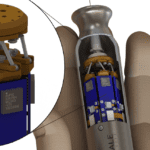
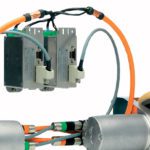
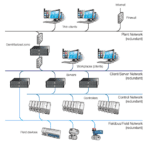
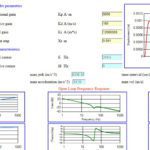
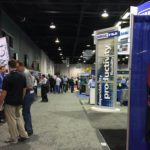

Leave a Reply
You must be logged in to post a comment.